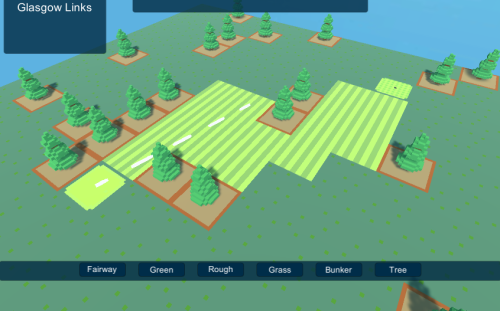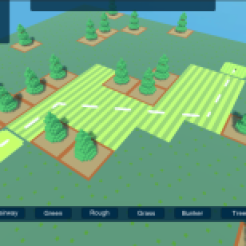Hey folks!
If you’ve played the latest demo, you may have found that the ball moves quite unrealistically; that is, it’ll suddenly move a lot further after bouncing than it should, and something must surely be wrong!
Well, you are right!
When it comes to Unity, it has a standard definition of 1 grid unit = 1 meter. Which is great. However, for the sake of optimization (or prototyping), currently Boss Golf works with 1 grid unit = around 25 meters in real life (that is the approximate size of each tile!). So Unity’s physics systems won’t really like that so much, as it isn’t made with different scales in mind.
Therefore, at some point, it may be likely I’ll have to roll out my own physics implementation, that makes sense with the gameplay; or re-scale everything to match Unity’s 1 unit = 1 meter scale, which I really don’t want to do because the current terrain system works extremely well.
For now, however, I have tweaked the physics settings, plus the drag on the ball/terrain, and added a small tweak to dampen the angular velocity further, ensuring that the ball comes to a stop.
This little tweak will be used later to react to different kinds of terrain too, so it’s a two-for-one kind of deal.
I’ve updated the current demo with the new changes, and you can find it, and download information, HERE!
That’s all for today’s quirk! Have fun!





